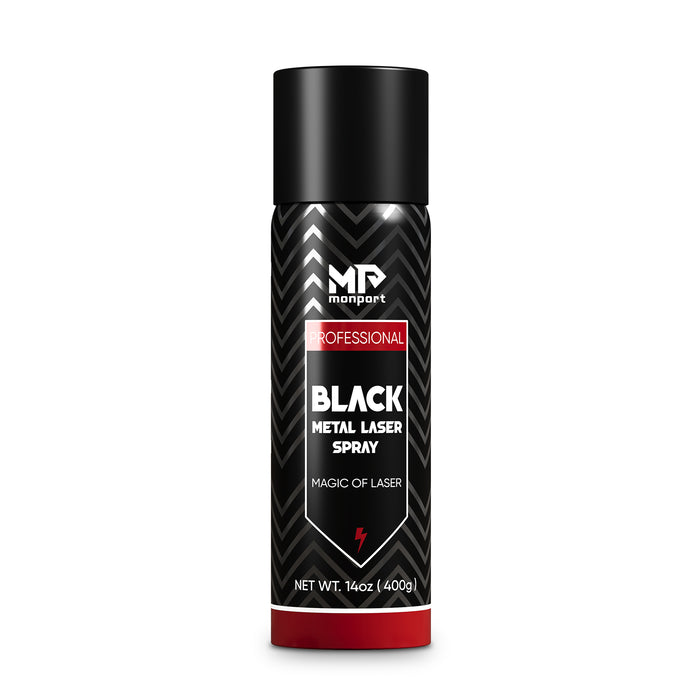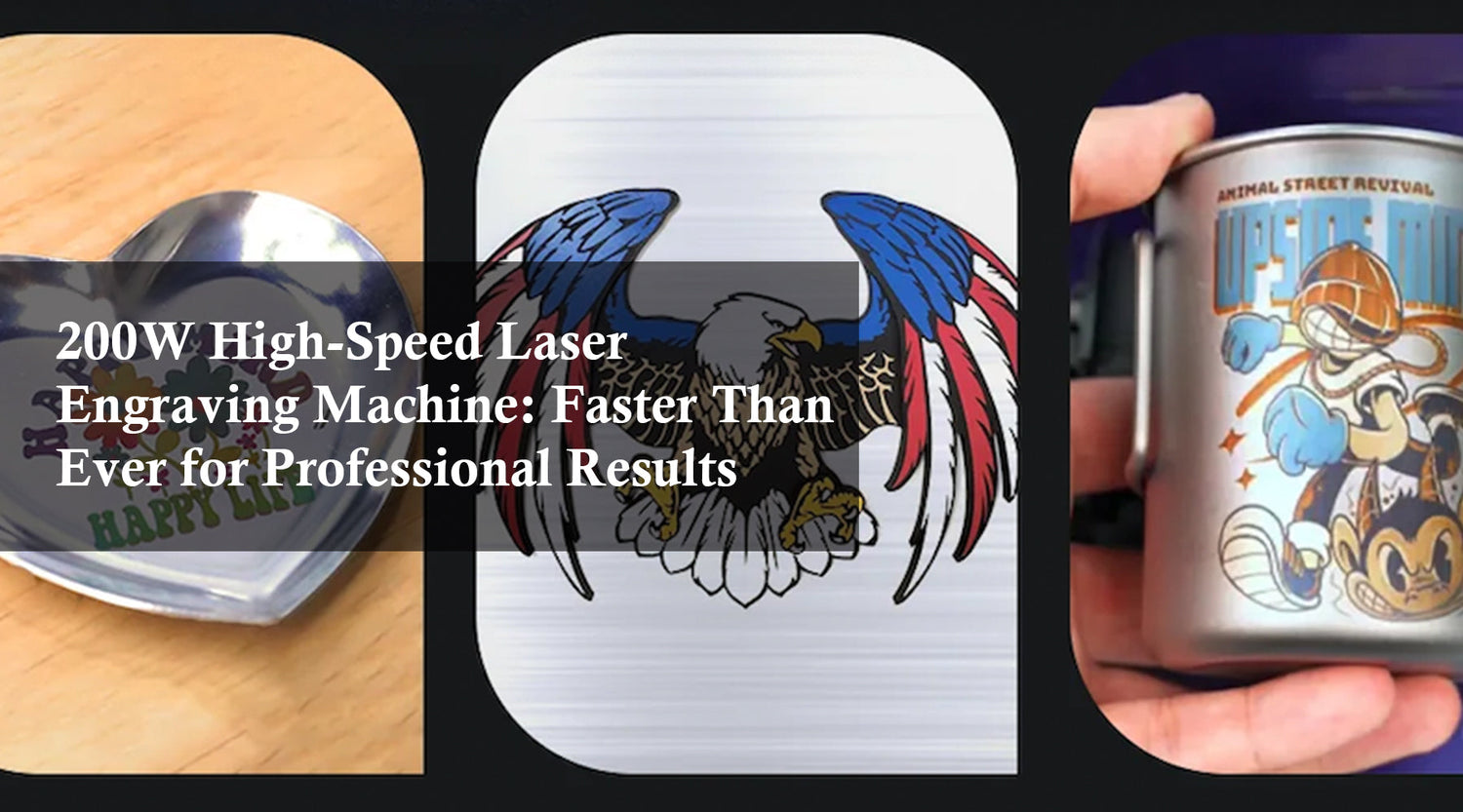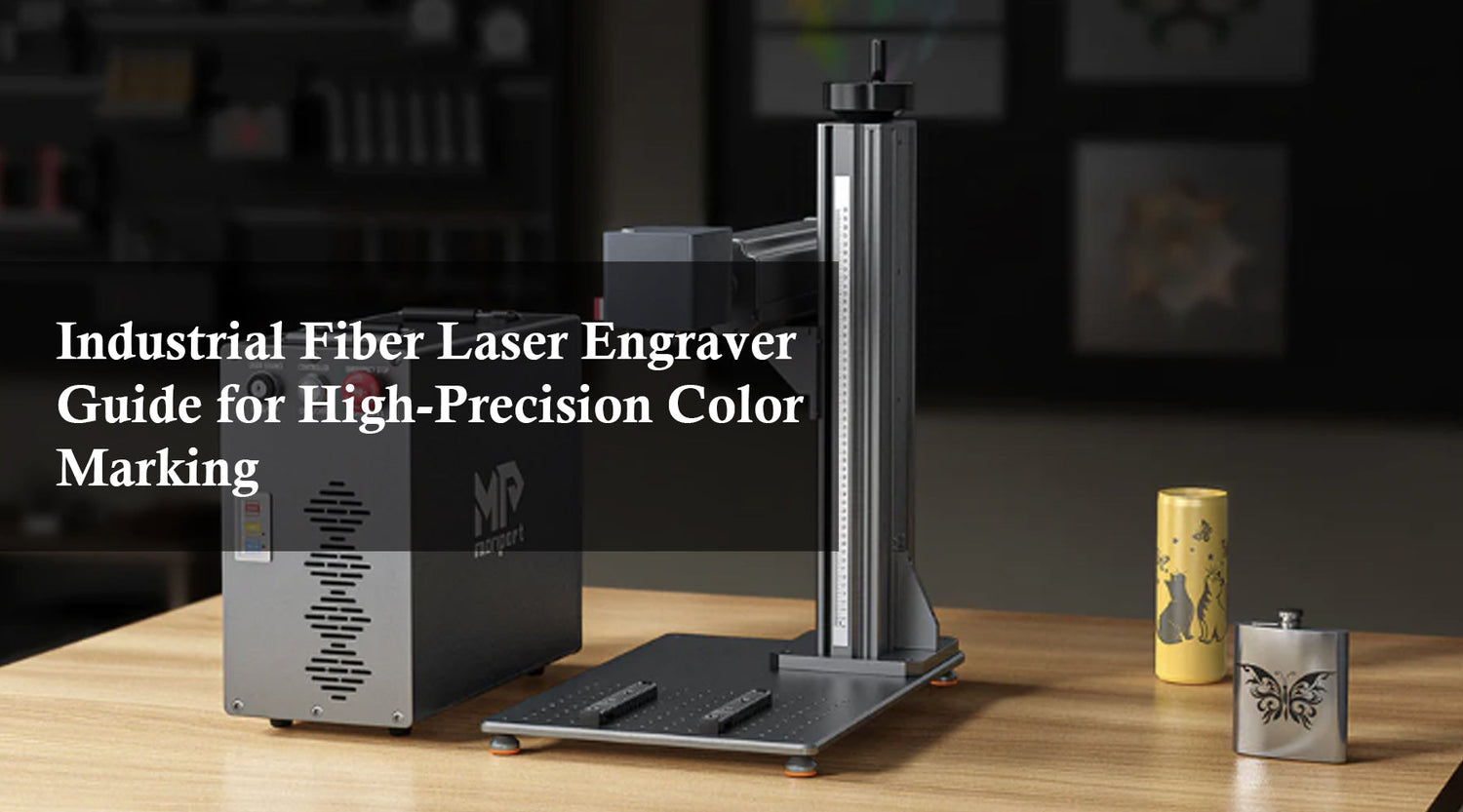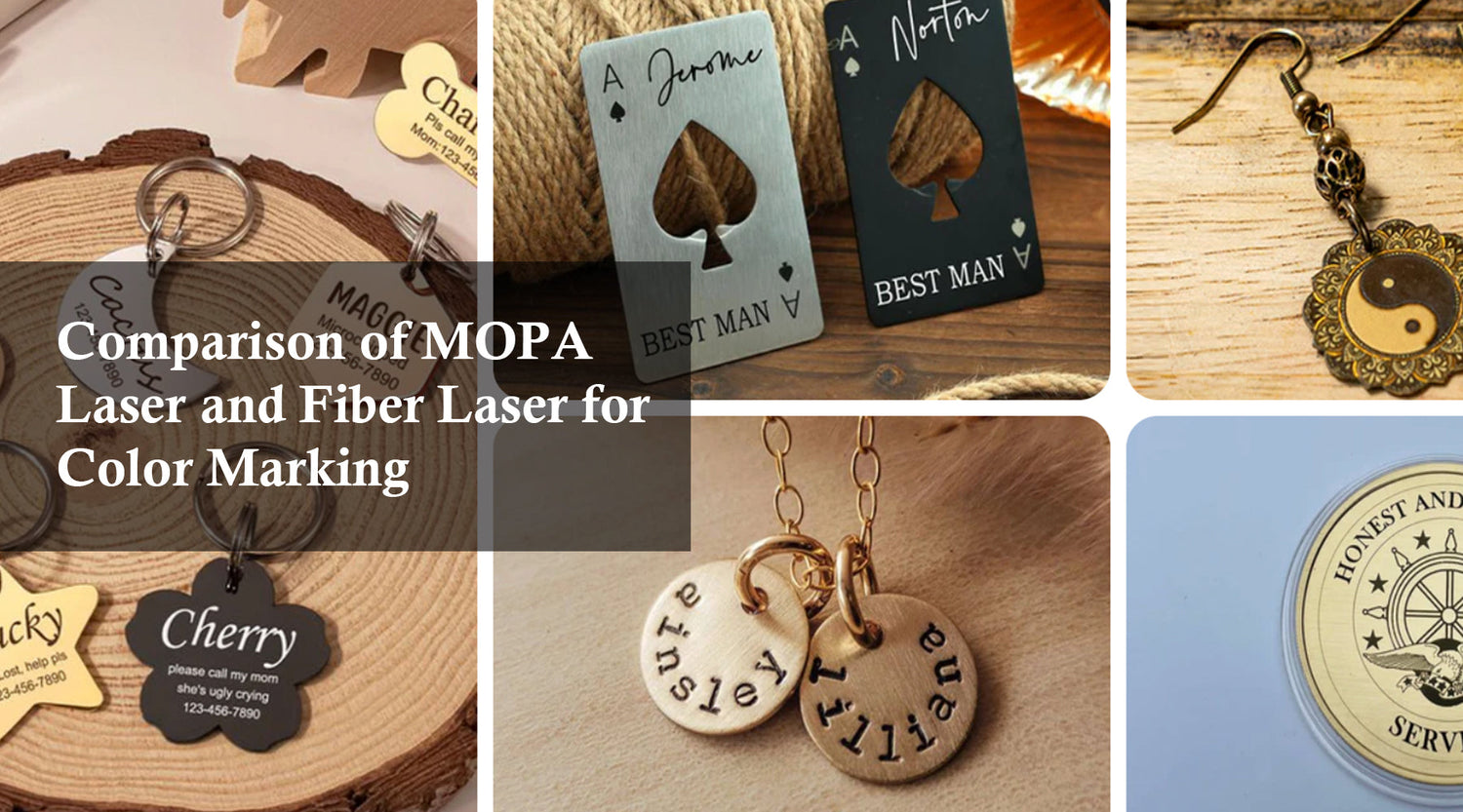Ⅰ. What is aluminum?
Aluminum is a lightweight, silvery-white metal that is widely used in various industries due to its unique properties.
Aluminum has many desirable properties, including high strength-to-weight ratio, excellent corrosion resistance, and good thermal and electrical conductivity. These properties make it a popular choice for a wide range of applications, including construction, transportation, packaging, and electronics.
Aluminum is also highly recyclable, with recycling rates approaching 100% in some regions. This makes it an environmentally friendly choice for many applications.
Despite its many advantages, aluminum does have some drawbacks, such as its high reflectivity, which can make it difficult to laser cut and engrave using traditional metal engraver methods. However, with the right techniques and equipment, it is possible to achieve high-quality results when working with this versatile material, especially when using laser marking and engraving aluminium for industrial or creative projects.
Ⅱ. Why mark aluminum with a laser engraver?

Laser etching aluminum with a laser engraver is a popular choice for many reasons, including:
Laser etching aluminum with a laser engraver is a popular choice for many reasons, including:
-
High precision: Laser etching aluminum offers unparalleled precision when marking aluminum. The laser beam can be precisely controlled to create intricate designs or markings on the surface of the metal with great accuracy, making laser marking and engraving aluminium a preferred choice for detail-oriented work.
-
Durability: Laser etching aluminum is highly durable and resistant to wear and tear. The process creates a permanent mark that will not fade or rub off over time.
-
Versatility: Laser engraving can be used to create a wide range of markings on aluminum, including text, logos, graphics, and even barcodes or QR codes. Laser marking and engraving aluminium ensures that each detail remains sharp and clear for years.
-
Speed: Laser engraving is a fast and efficient process that can produce high-quality markings on aluminum in a relatively short amount of time.
-
Cost-effective: Laser engraving is a cost-effective method for marking aluminum, especially for small to medium-sized production runs. Once the initial setup is complete, the process can be automated, reducing labor costs and increasing productivity.
Overall, laser etching and engraving aluminium is an effective way to mark aluminum for a variety of applications, from industrial and commercial to personal and artistic.
Ⅲ. How to engrave aluminum?
A galvo laser is a type of laser that uses a pair of galvanometer scanners to precisely control the movement of the laser beam. This technology is particularly useful for applications like metal engraving and fine detailing on various materials, including aluminum.
Laser cutting and engraving aluminium can be a challenging process due to its reflective properties and thermal conductivity. However, with the right techniques and metal engraver equipment, such as a galvo laser system, it is possible to achieve high-quality results. The precision of a galvo laser enables accurate and clean engraving, overcoming the challenges posed by aluminum's reflective surface.
Here are some tips to help you get started:
Use a fiber laser: Aluminum reflects traditional CO2 laser light, making it difficult to cut or engrave. A fiber laser, on the other hand, is better suited for working with metal materials like aluminum. Monport 50w fiber laser engravers have a lifetime of up to 100,000 hours, depending on power setting usage, which can safely mark most metals, such as stainless steel, gold, silver, brass, and aluminum.
Choose the right wavelength: A 1064nm wavelength fiber laser is ideal for cutting and engraving aluminum.
Use high power: Aluminum requires higher power than other materials to achieve the desired results. A power output of at least 200 watts is recommended for cutting aluminum, while engraving can be done with a lower power output. A more powerful laser engraver can engrave your aluminum material precisely and easily. Compared Monport 20w fiber laser, Monport 50w fiber laser will produce higher power.
Focus carefully: The laser beam must be focused precisely on the aluminum surface to achieve clean cuts and accurate engraving. Make sure to adjust the focus distance based on the thickness of the aluminum.
Experiment with speed and power settings: Finding the right combination of speed and power is crucial for achieving the desired results. Start with a low speed and power setting and gradually increase until you find the optimal combination.
Clean the aluminum surface: Before cutting or engraving, clean the aluminum surface to remove any oils, dirt, or debris that could interfere with the process.
With the right equipment and techniques, laser cutting and engraving aluminum can be a highly effective way to create precise and intricate designs on this challenging material.
Ⅳ. Some aluminum laser-engraved applications
We use aluminum laser engraving in a variety of applications to create detailed and high-quality designs on this versatile metal. Here are some examples of aluminum laser-engraved applications:
- Nameplates and identification tags

Aluminum nameplates and identification tags are commonly laser engraved with text, logos, or other designs to create durable and permanent markings.
- Laser Engraving Aluminum Signage

Aluminum is a popular material for creating indoor and outdoor laser engraving signs. Laser engraving allows for the creation of detailed designs that can withstand harsh outdoor conditions.
- Aluminum Cake Pan

Laser engraving can be used to add decorative designs to aluminum items such as coasters, wine glasses, and decorative plates.
- Aluminum Awards and trophies
Aluminum trophies and awards can be laser engraved with custom designs, text, and logos to create personalized and meaningful keepsakes.
- Jewelry and accessories
Aluminum can be laser engraved to create intricate designs on jewelry and accessories, such as bracelets, necklaces, and keychains.
- Electronics
Aluminum electronics components can be laser engraved with logos, serial numbers, and other markings for identification and branding purposes.
- Industrial and manufacturing
Aluminum parts and components used in industrial and manufacturing settings can be laser engraved with identification codes, part numbers, and other markings for tracking and quality control purposes.
Achieve Flawless Results with Monport Black Laser Marking Spray
If you're looking to upgrade your metal engraving projects, the Monport black laser marking spray is the perfect companion. Specially formulated for CO2 laser engraving machines (25W and above), this spray ensures your metal markings are sharp, permanent, and highly visible. Whether you're engraving aluminum, stainless steel, or brass, this spray delivers impressive results every time.
Why Choose Monport Black Laser Marking Spray?
This black laser marking spray is designed for effortless application. Simply clean the metal surface with alcohol, shake the can for two minutes, and spray from 6 to 8 inches away. The ultra-fine mist provides an even coating thanks to its anti-clog nozzle, and it dries within five minutes, helping you maintain a smooth and efficient workflow.
After laser engraving, all you need to do is rinse off the surface to reveal bold, high-contrast black marks. There’s no mess, no residue—just clean, permanent results. The formula is free of alcohol in the package, ensuring safe and clean use.
Key Benefits
-
Permanent and durable markings
The fine-grained formula penetrates deeply into metal surfaces, creating marks that are heat-resistant and long-lasting. -
High compatibility
Works seamlessly with CO2 laser engraving machines, making it ideal for customizing tools, jewelry, glassware, and more. -
Even, precise spray
The nanoparticle formula and anti-clog nozzle provide consistent coverage, even for detailed designs. -
Quick application and cleanup
No waiting, no hassle. Spray, engrave, rinse—and your design is ready to shine.
The black laser marking spray comes in a 14 oz aluminum can, offering plenty of product for multiple projects. Its compact size and strong performance make it a go-to tool for both professionals and DIY creators.
Final Thoughts
For anyone using a CO2 laser engraver, the Monport black laser marking spray is a game changer. With its easy application, permanent results, and high compatibility with metal surfaces, it’s the ideal solution to elevate your laser engraving to the next level. Try it once, and you’ll never want to engrave without it!
FAQs
1. What type of laser is best for engraving aluminum?
A fiber laser, particularly one with a 1064nm wavelength, is the best choice for engraving aluminum. This type of laser overcomes aluminum’s reflective properties, producing precise, permanent markings.
2. Can a CO₂ laser engrave aluminum directly?
Standard CO₂ lasers are not ideal for direct aluminum engraving due to reflectivity. However, you can use a CO₂ laser with a black laser marking spray, like Monport’s, to achieve bold, durable results.
3. How do I prepare aluminum before laser engraving?
Clean the aluminum surface thoroughly to remove dust, oils, or debris. This ensures the laser beam interacts evenly with the metal, resulting in sharp and consistent engravings.
4. What are common applications for aluminum laser engraving?
Popular uses include nameplates, industrial tags, signage, jewelry, electronics, awards, and decorative items. Aluminum’s durability makes it suitable for both indoor and outdoor applications.
5. How can I make aluminum engravings more visible?
For higher contrast and readability, apply a laser marking spray before engraving. After engraving, rinse off the spray to reveal deep, black, permanent markings.
Ⅴ. Conclusion
Aluminum laser engraving is a versatile process that can be used in a variety of applications to create durable and high-quality markings on this unique metal. With the right equipment, such as a galvo laser, engraving aluminium becomes easier, more precise, and highly effective. From industrial manufacturing to jewelry design, it is an invaluable technique for customizing and detailing aluminum products.
For best results, integrating laser marking and engraving aluminium into your workflow can greatly enhance quality and durability. Find your suitable aluminum projects and start your laser engraving journey with Monport!
Read More: Introduction to Engraving Letters with a CO2 Laser and How to Start Laser Engraving Tumblers









